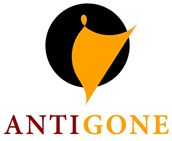
This handbook is written for secondary school teachers (ISCED 2 & 3), and it aims to help you to organise drama- and theatre-based workshops on Gender-Based Violence in your classroom, either physically or with the use of online tools. The lockdown imposed in many countries because of the COVID-19 pandemic in 2020-21 has provenly increased Gender-Based Violence all over Europe, so addressing the problem in classrooms has even more importance in these years.
Our consortium believes that drama- and theatre-based activities has a significant impact on attitudes, emotions and ways of thinking of the students, and can change patterns of pre-conceptions or passive negligence. Based on our experience, pupils really enjoy working with methods based on fiction and stories. With such techniques, you will be able to convey your teaching goals and discuss sensitive issues in a way that pupils won’t even recognize they are learning.
The handbook is divided in 4 chapters.
Chapter 1. gives an overview of the topic gender-based violence:
- The chapter introduces the central human rights, the basic concepts and the theories explaining the root causes behind gender inequality, leading to gender-based violence
- A specific section is devoted to gender-based violence during crises, such as the COVID-19 lockdown was, or the refugee crisis was of the past years.
- The chapter ends with an overview of the current challenges in the Antigone consortium partner countries.
Chapter 2. attempts to introduce you to the theory and methodology of applied drama:
- The chapter starts with a short introduction to the theory and the key concepts,
- followed by an introduction to the basics of the methodology: explaining how you can start conducting dramatic activities in your classroom.
- Furthermore, you will find tips and resources about facilitation, handling difficult situations and challenges in the classroom and
- working interactively in an online platform, Zoom.
Chapter 3. is the core of the handbook, since it presents you 45- or 90-minutes-long lesson plans, that a single teacher can implement independently. You will find easier and more advanced plans, as well as information on how some of the plans can be adapted for Zoom. The lesson plans cover a variety of methodologies and themes. The presentation of each lesson plan follows a similar structure:
- You will find a table showing the length, the age-group the lesson has been planned for, whether the group needs advance knowledge of drama and the level of difficulty for the teacher.
- Summary of the lesson: a short overview of the lesson plan’s main aspects, aims and target group.
- Specific aims of the lesson: What are the mains aims of this lesson? What impact should you aim for and be satisfied with?
- Materials and preparation needed: e.g. space used, application to install if it is an online lesson, or the students need to read in advance.
- Detailed description of teacher-led activities: specific step-by-step descriptions from the teacher’s perspective with proposed timing and some explanation to what each activity aims to achieve.
- Possible further activities, supporting materials: anything that supports you in developing the lesson or discussions that follows.
This chapter also offers some specific connection with the educational contexts in your country and a few examples of complex projects and processes from around the world.
Chapter 4. is partially adjusted to the specific countries, and it summarizes useful resources regarding
- the signs of gender-based violence, what you can do as a teacher, as a victim or as someone who identifies gender-based violence,
- who can help in your country (e.g. helplines, organisations)
You can download the handbook in English here.
Below you can download the handbook also in the different languages of the partnership
